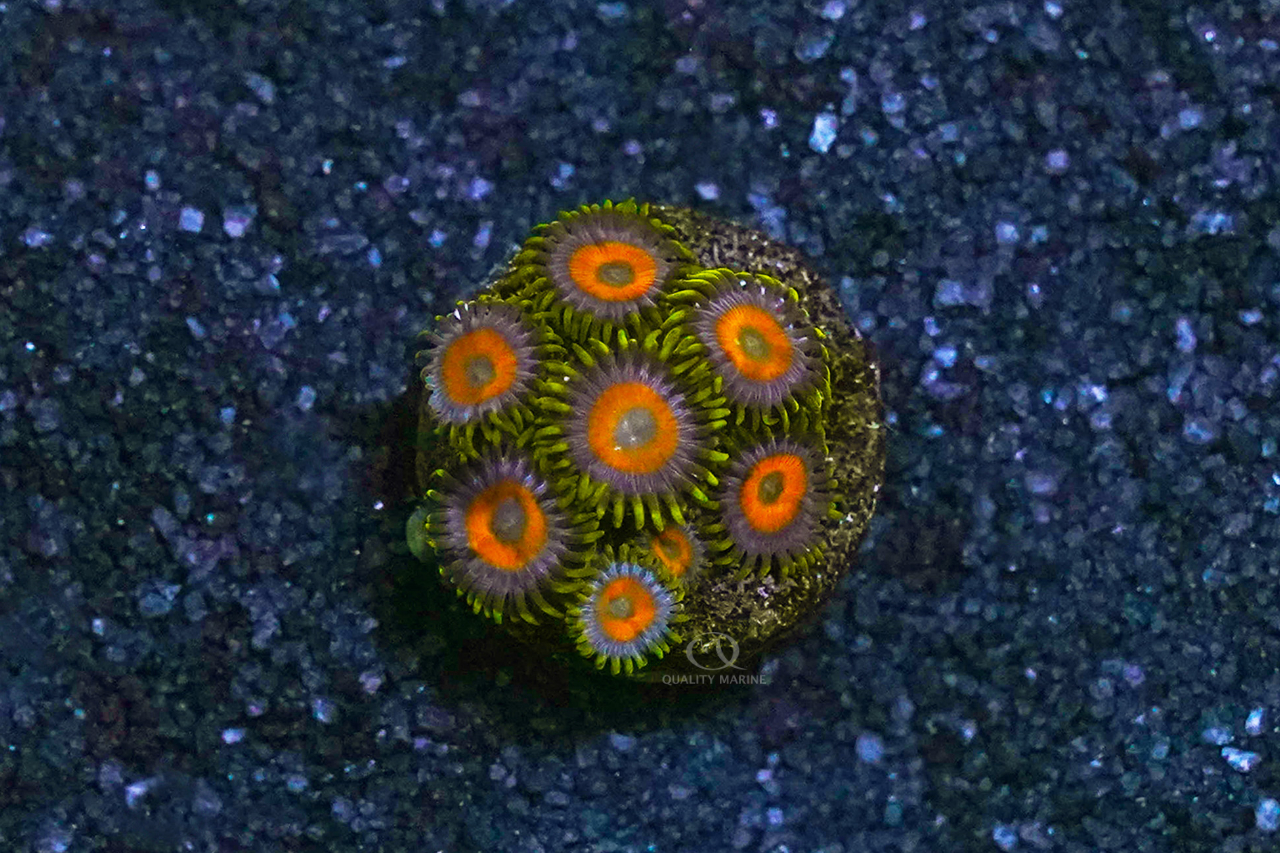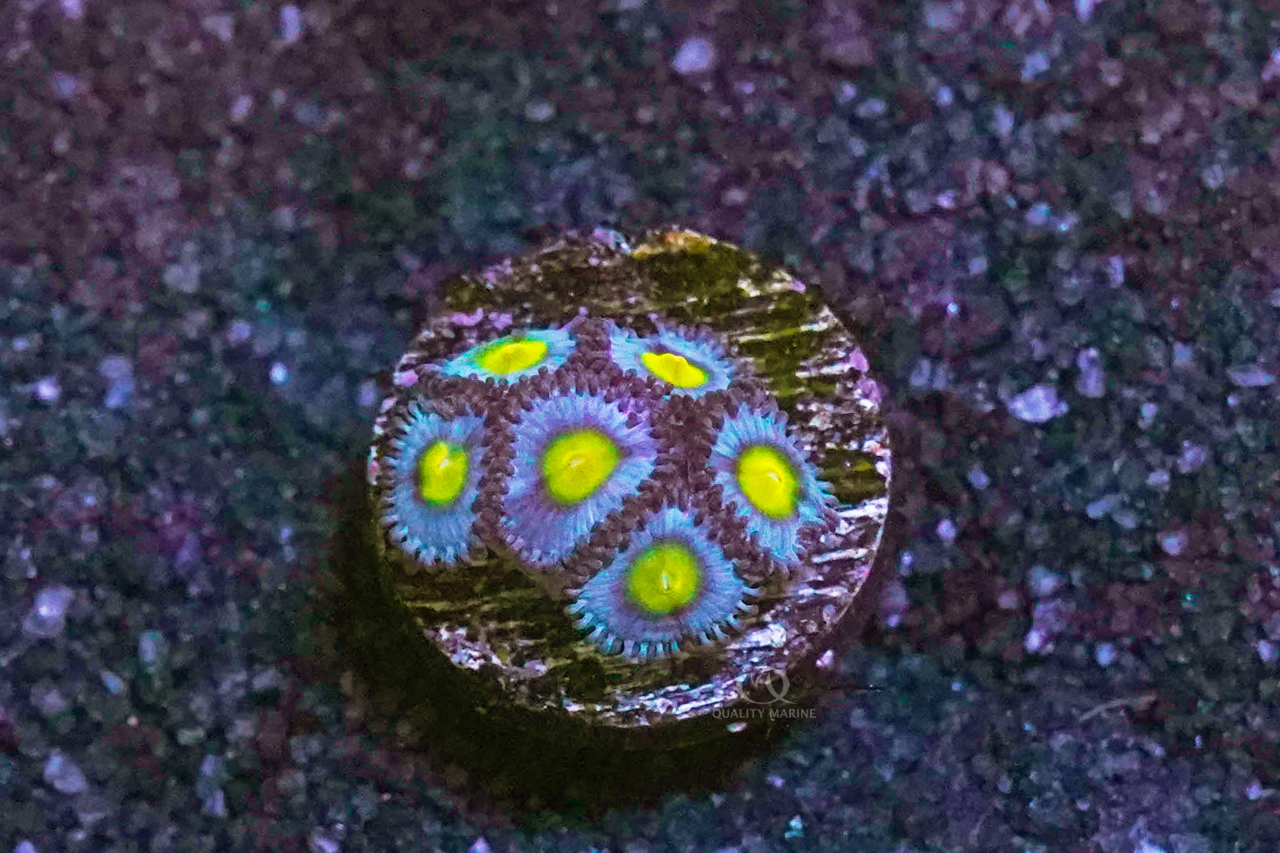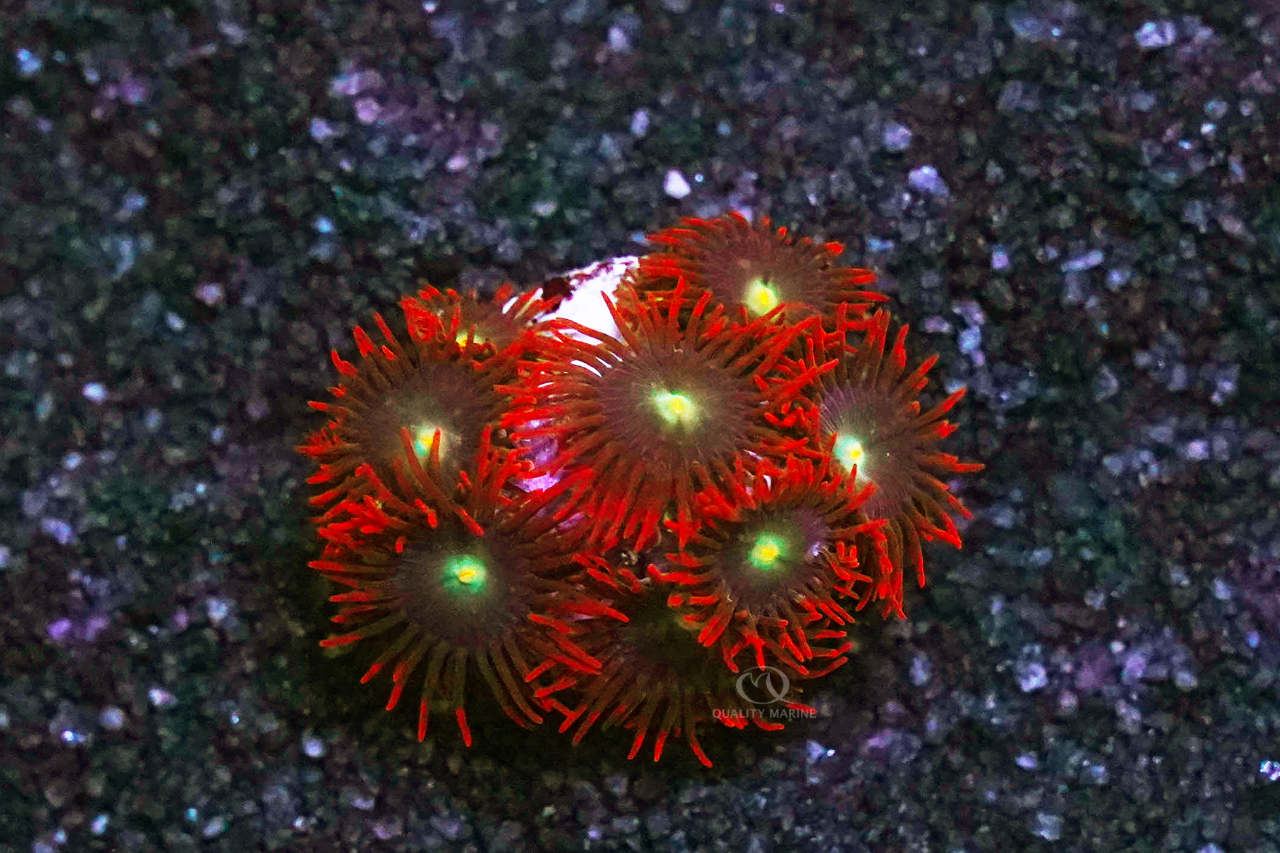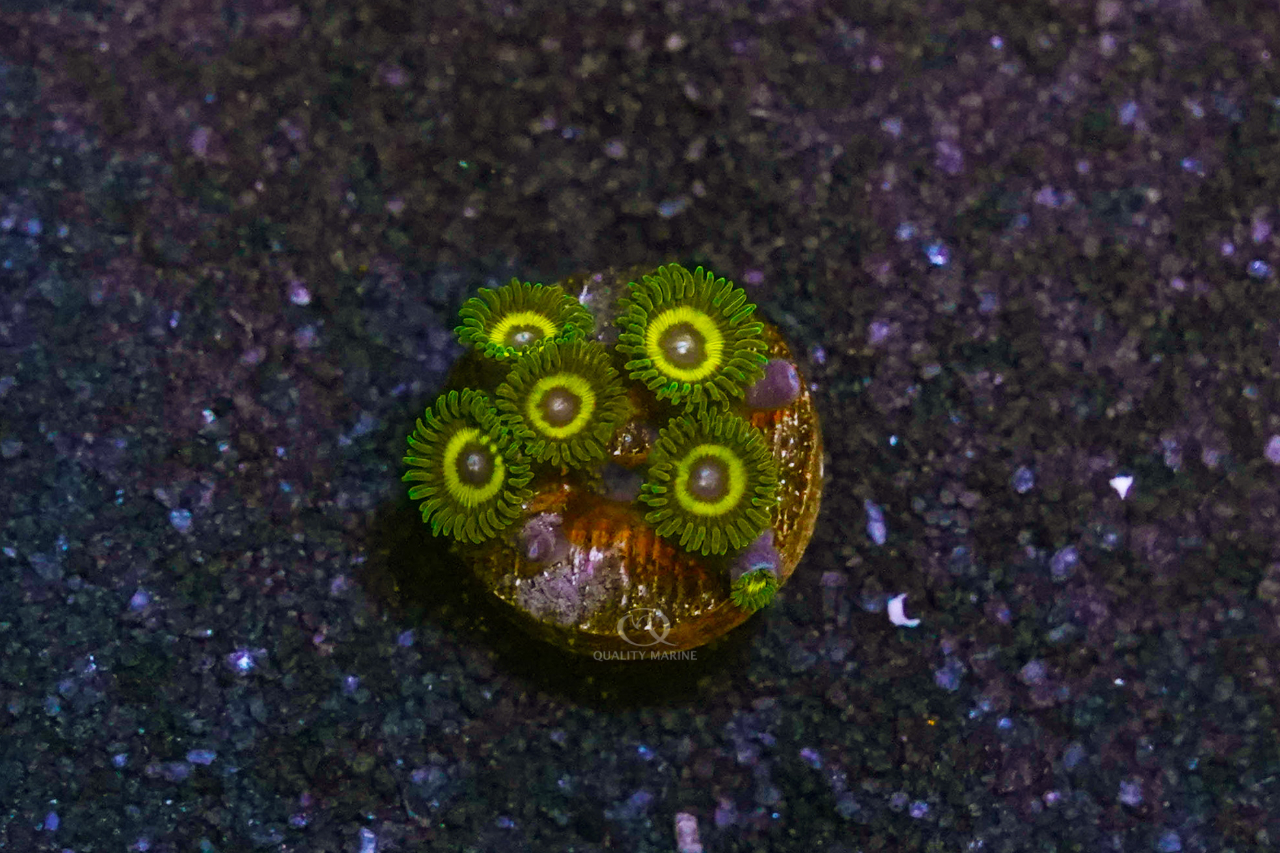The Love of Zoanthids Never Fades

Zoanthids. Love them or love them, these stunning little colonial polyps are often the first “coral” any of us keep and for good reason. They come in a dazzling variety of colors and patterns, many if not most of them are quite hardy and some are even spread quickly. They can be propagated relatively easily, and many are incredibly tolerant of less-than-ideal conditions. Recently, here at Quality Marine, we've added a whole slew of amazing new varieties.

If you haven't been to our zoanthid section on www.qualitymarine.com in the last few weeks, we're here to tell you to head there ASAP. On the new list, we have Blue Riddlers, with a blue face and eye with a light purple fringe. These are easy to care for and will like moderate lighting. The Jungle Juice variety are a favorite around here with their blue eyes on orange faces with bright yellow/neon green fringe tips that really pop under actinic highlights. The Red Bull Zoas have purplish eyes on a red orange face and will do well under moderate lighting. The Yellow Submarines make everyone hum an old song and really standout with the blue eyes and bright yellow faces with a pale greenish fringe. These do better with more food and a bit less light, acclimate them slowly to bright conditions. Speckled Krakatoa come with what is probably our favorite name and have to be seen to be believed, they have a brilliant orange eye and fringe with a neon yellow or green face. Under actinic lights, they look like they come from another planet. Rasta Zoanthids are predictably yellow, green and red, though some of the red looks more orange on specific ones; some of this is lighting dependent. They are slower growers but make up for that with their just stunning coloration. You'd think that wildfire would grow quickly, but they are pretty average that way. Nothing else about them is average in any way. Their little, alien green eyes are surrounded with a purple face and a slender tipped, bright orange fringe. AOI zoanthids are icons, and if you've never seen them before, you need to add some to your display. Their larger green eyes are surrounded by an azure blue face, and this will make everyone say WHOAAA when the actinic lights dominate. They like a little more flow and lighting that is skewed to the actinic / blue spectrums to maintain their incredible color.

If you're new to Zoanthids, they are a soft tissued polyp with daisy-like faces with a fringe that surrounds them not unlike the petals of said daisy. They spread by budding (making new buddies) and in this manner they will spread their colony over any adjacent hard surfaces. You can start with a single polyp and sooner or later, if it is happy, it will make buddy and then you have two. Those two will become four, and four become eight, you see the theme. The more you have, the faster your colony will grow. As they can only attach to hard surfaces, many aquarists will utilize sand in their displays as a natural barrier between colonies to keep them from intermingling or overgrowing adjacent colonies.
On the topic of nutrients, it has been our experience that most (if not all) Zoanthids do not do well in “zero nutrient” style aquariums. They seem to struggle unless there is at least trace levels of nitrate and phosphate present in the water (as do many corals). Very elevated levels of these nutrients can also have detrimental effects in that the zoanthids can be overgrown by encroaching algae. Shoot for nitrates between one and five ppm and low, but not zero phosphates, they are acceptable up to 0.1ppm. Tropical temperatures are the standard, between 72 and 78 will work for most, and pH should be nice and stable somewhere between 8.0 and 8.4. Salinity should also be stable and at least 1.024 but under 1.027.

Zoanthids are generally photosynthetic, and the vast majority of the polyps collected are from relatively shallow depths and will need moderate to bright lighting. They should be acclimated to intense light levels slowly. Start with them in a corner or near the bottom of your display and over the course of days, move them into brighter and brighter locations until you find the spot you want them to take anchor and spread. Some Zoas aren't going to like extremely bright lighting no matter how slowly you move them and putting them into locations like this will cause them to change colors, sometimes with amazing results, but often times turning them brown or green. If you notice your Zoanthids stretching for the light, they likely need more of it; happy Zoas grow low and tight.
If you notice your Zoas turning brown or green in bright lighting, they likely came from very deep water where the light supply is limited (or were cultured in a lower light environment) as a result, these polyps are almost entirely dependent on feeding. Even the Zoanthids that crave bright light will do best and grow / reproduce faster with supplemental foods; they do not need much, and it should be very small in size. Feeding weekly, or at most twice a week is plenty. In house, we feed a blend of the live algae products from Nutramar, and / or frozen options like Gamma Copepods which are all natural food sources, and we've realized excellent growth rates and enhanced coloration using them with all our Zoanthids. Any type of food you choose can be directly (but gently) fed with a baster with your flow turned off or at least way down. All frozen foods should be thawed and brought up to aquarium temperature before feeding.

It is entirely possible that the most important aspect of successfully keeping zoanthids is flow. Like any invertebrate that is stuck in one place, Zoanthids depend on flow for keeping them clean, delivering food/ carrying away waste and ensuring they are surrounded with fresh, oxygenated water. Conversely, they are soft bodied critters and the possibility of “too much of a good thing” is also relevant. When placing your Zoas, you're trying to achieve a gentle flow that is not laminar (direct and constant in direction). The Zoas will adjust to higher flows over time as long as they are not too strong or too constant. For advanced hobbyists that can alter flows over time, Zoanthids often respond very well to this arrangement. If your zoanthids are closed up tight and refuse to open, this is often the result of flow that is too strong. This refusal to open can also be attributed to a change in lighting that is too intense, so if the lights are bright and the flow seems good, this may be your issue.
Zoanthids are staff favorites here among pretty much everyone, it's a love we all establish early in our coral keeping days and it never really fades. Beginners love their hardiness, and experts love the impressive variety of colors patterns. If you are looking for the best selection of the coolest variations of Zoanthids, head to your LFS and ask them about the stunning selection available from Quality Marine today!